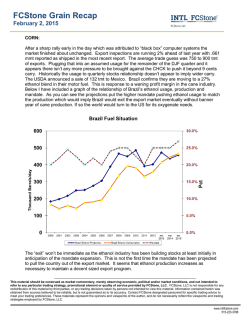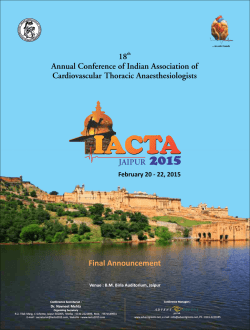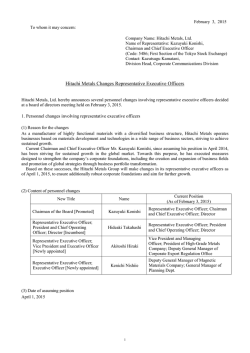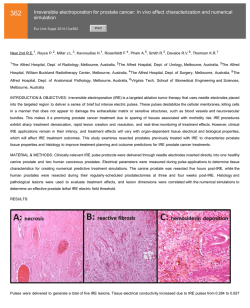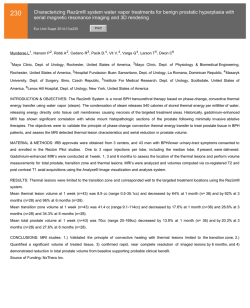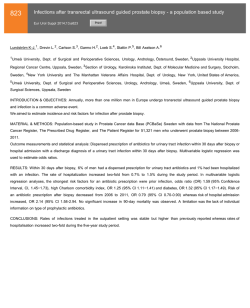
! Casinostar Juegos Gratis - Nerium Biotechnology, Inc.
Biochemical Pharmacology 62 (2001) 469 – 472 Short communication Inhibition of export of fibroblast growth factor-2 (FGF-2) from the prostate cancer cell lines PC3 and DU145 by Anvirzel and its cardiac glycoside component, oleandrin Judith A. Smitha, Timothy Maddenb,c, Mary Vijjeswarapub, Robert A. Newmanb,c,* a Division of Pharmacy, University of Texas M.D. Anderson Cancer Center, Houston, TX 77030, USA Pharmaceutical Development Center, University of Texas M.D. Anderson Cancer Center, Houston, TX 77030, USA c Department of Experimental Therapeutics, University of Texas M.D. Anderson Cancer Center, Box 52, 1515 Holcombe Blvd., Houston, TX 77030, USA b Received 22 August 2000; accepted 3 December 2000 Abstract Anvirzel is an extract of Nerium oleander currently undergoing Phase I clinical evaluation as a potential treatment for cancer. Two of the active components of Anvirzel are the cardiac glycosides oleandrin and oleandrigenin. Previous studies have demonstrated that, in vitro, cardiac glycosides may inhibit fibroblast growth factor-2 (FGF-2) export through membrane interaction with the Na⫹,K⫹-ATPase pump. In continuing research on the antitumor activity of this novel plant extract, the relative abilities of oleandrin and oleandrigenin to inhibit FGF-2 export from two human prostate cancer cell lines, DU145 and PC3, were examined. An ELISA assay was utilized to determine the FGF-2 concentration in the cell culture medium before and after exposure to cardiac glycosides or the parent extract material Anvirzel. Both cell lines were exposed to non-cytotoxic concentrations of oleandrin (0.05 and 0.1 ng/mL) for up to 72 hr. Studies also were conducted with Anvirzel and ouabain. Oleandrin (0.1 ng/mL) produced a 45.7% inhibition of FGF-2 release from PC3 cells and a 49.9% inhibition from DU145 cells. Non-cytotoxic concentrations (100 ng/mL) of Anvirzel produced a 51.9 and 30.8% inhibition of FGF-2 release, respectively, in the two cell lines. The decrease in FGF-2 release from cells required continuous incubation for 48 –72 hr; shorter incubation times were not effective. These results demonstrate that Anvirzel, like oleandrin, inhibited FGF-2 export in vitro from PC3 and DU145 prostate cancer cells in a concentration- and time-dependent fashion and may, therefore, contribute to the antitumor activity of this novel treatment for cancer. © 2001 Elsevier Science Inc. All rights reserved. Keywords: Oleandrin; Oleandrigenin; Cardiac glycosides; FGF-2; Na⫹,K⫹-ATPase; Anvirzel 1. Introduction Anvirzel, a hot water extract of the ornamental evergreen plant Nerium oleander, is now undergoing clinical evaluation as a treatment for cancer. It is known to contain a complex mixture of polysaccharides and oleandrin, a unique cardiac glycoside compound. We recently showed that oleandrin produces apoptosis in prostate tumor cells and that this effect is mediated through inhibition of Na⫹,K⫹-ATPase with resulting increased intracellular calcium, release * Corresponding author. Tel.: ⫹1-713-792-3608; fax: ⫹1-713-7926759. E-mail address: [email protected] (R.A. Newman). Abbreviations: PARP, poly(ADP-ribose) polymerase; NF-B, nuclear factor-B; FGF-2, fibroblast growth factor-2; ER, endoplasmic reticulum; and MTT, 3-(4,5-dimethylthiazol-2-yl)-2,5-diphenyltetrazolium bromide. of mitochondrial cytochrome c, activation of the caspase cascade, and PARP cleavage [1]. In addition, we also reported the ability of oleandrin to block activation of NF-B that may also contribute to the antitumor effect [2]. Cardiac glycosides, such as oleandrin, digoxin, or ouabain, inhibit the membrane Na⫹,K⫹-ATPase pump that, in turn, raises the intracellular Na⫹ concentration, augmenting Na⫹-Ca2⫹ exchange. This results in increased intracellular Ca2⫹ and enhanced myocardial contractility [3,4]. Interestingly, studies have now shown that the Na⫹,K⫹ATPase pump is also involved in membrane transport of selected cellular proteins and cationic substances important to tumor cell growth [5,6]. FGF-2, a regulatory peptide secreted from cells, is involved in a variety of biological processes including cell differentiation, cell growth and migration, angiogenesis, and tumor formation [7]. Unlike other proteins, however, 0006-2952/01/$ – see front matter © 2001 Elsevier Science Inc. All rights reserved. PII: S 0 0 0 6 - 2 9 5 2 ( 0 1 ) 0 0 6 9 0 - 6 470 J.A. Smith et al. / Biochemical Pharmacology 62 (2001) 469 – 472 FGF-2 lacks the signal peptide sequence required for export from the cell by the ER for protein secretion [5,6]. Hence, the mechanism of FGF-2 release from the cell was previously believed to require disruption of the cell membrane. It has now been reported that FGF-2 export occurs through an ATP-dependent, non-ER related pathway [5]. Furthermore, investigators have demonstrated that FGF-2 binds to the ␣1-subunit of Na⫹,K⫹-ATPase and have hypothesized that inhibition of this enzyme activity would decrease FGF-2 release from the cell [5,6,8]. Florkiewicz et al. [5], for example, reported that cardiac glycosides such as ouabain and digoxin did, in fact, inhibit cellular FGF-2 release in a time- and concentration-dependent manner. Therefore, related cardiac glycosides that inhibit Na⫹,K⫹-ATPase activity may also inhibit FGF-2 release from the cell. Since it has been proposed that cardiac glycosides may, through a variety of mechanisms, possess antitumor activity [9,10] and since two of the primary components of Anvirzel (oleandrin and oleandrigenin) are cardiac glycosides, we hypothesized that incubation of tumor cells with Anvirzel or its principal components may also reduce efflux of FGF-2. To test this hypothesis, the relative abilities of Anvirzel, oleandrin, and oleandrigenin to inhibit FGF-2 release were examined in two human prostate cancer cell lines, DU145 and PC3. Both of these cell lines are known to express a high level of transmembrane Na⫹,K⫹-ATPase and secrete high levels of FGF-2 [7,11]. 5% CO2 at 37°. A Neubauer hemocytometer was used to determine cell number prior to and upon completion of all experiments. 2.3. Growth inhibition assay The MTT assay was utilized to determine concentrationdependent inhibition of cell growth. Briefly, this assay utilized MTT to quantify the translucence of the treated cells. Each well was plated with 3 ⫻ 104 prostate tumor cells and incubated overnight before being treated with a wide range of oleandrin, oleandrigenin, ouabain, or Anvirzel drug concentrations. Compounds were dissolved in DMSO prior to dilution in RPMI-1640 tissue culture medium. Drug concentrations were tested in quadruplicate in each cell line, and each experiment was repeated three times. 2.4. Inhibition of cell FGF-2 release To determine the temporal relationship between drug treatment and FGF-2 release, cells (1 ⫻ 106) were exposed to non-toxic concentrations of oleandrin (0.05 or 0.1 ng/ mL), Anvirzel (100 or 200 ng/mL), or ouabain (170 ng/mL) for 72 hr. During the incubation, aliquots (250 L) of cell culture supernatant were removed at time zero, 24, 48, and 72 hr and frozen at ⫺70° for FGF-2 analysis. 2.5. FGF-2 analysis 2. Materials and methods 2.1. Materials The MDACC Core Facility supplied RPMI-1640 tissue culture medium. Fetal bovine serum was purchased from Atlanta Biologicals. Antibiotic solution (penicillin/amphotericin/streptomycin) was purchased from Mediatech Cellgro. Quantikine human FGF basic Immunoassay (DFB50) was purchased from R&D Systems. Tissue culture plasticware was obtained from Falcon, Inc. All ELISA assays were performed using a Vmax kinetic UV microplate reader and SoftMAX Pro data analysis software (Molecular Devices). L-Glutamine, oleandrin, oleandrigenin, ouabain, DMSO, and MTT were purchased from the Sigma Chemical Co. Textract Inc. provided Anvirzel. The Quantikine Human FGF basic ELISA assay specifically recognizes natural and recombinant FGF-2 and does not cross-react with other growth factors. All measurements of FGF-2 were performed according to the methodology of the manufacturer; the assay was found to be reproducible. Within-day test concentrations (high and low concentrations within the linear range) of FGF-2 were determined with a 7–11% variance. For the between-day test concentrations, the variance was less than 10%. Cell culture supernatant samples were thawed slowly at room temperature and then centrifuged at 12,000 g for 5 min at 4°. FGF-2 standard solutions (2– 640 pg/mL), wash buffer, color reagents, and stop solutions for the ELISA assay were prepared fresh daily. Plates were read with a kinetic UV microplate reader at 450 nm with background correction at 570 nm. 2.2. Cell lines and culture 3. Results The human prostate tumor cell lines DU145 and PC3 were obtained from ICN Biomedicals, Inc. and the American Type Culture Collection, respectively. Cells were grown and maintained in RPMI-1640 medium containing: 140 U/mL of penicillin, 0.4 g/mL of amphotericin, 140 g/mL of streptomycin, 2 mM L-glutamine, and 10% fetal bovine serum. Cells were grown in T-25 cm3 flasks as an adherent monolayer culture in a humidified atmosphere of In both cell lines, oleandrin was consistently more potent than its less water-soluble aglycone, oleandrigenin (Fig. 1). The IC50 growth inhibition concentrations for oleandrin and oleandrigenin were 0.001 and 0.015 g/mL, respectively, for PC3 cells and 0.002 and 0.018 g/mL, respectively, for DU145 cells. As expected, Anvirzel was far less potent with IC50 values of 1.23 and 1.67 g/mL against PC3 and DU145 cells, respectively. Examination of the relative cytotoxicity J.A. Smith et al. / Biochemical Pharmacology 62 (2001) 469 – 472 471 Fig. 2. Concentration of FGF-2 in cell culture medium as a function of duration of incubation. Confluent cell populations were briefly washed, and fresh tissue culture medium was placed onto the cultures. Aliquots of culture medium were then removed for analyses of FGF-2 by ELISA at 24, 48, or 72 hr. Data shown represent mean values of replicate experiments. Fig. 1. (A) Relative inhibition of PC3 cell growth or (B) DU145 cell growth as a result of a 72-hr incubation with oleandrin, oleandrigenin, or Anvirzel. Data are presented as means ⫾ SD obtained from five separate experiments. of Anvirzel and its principal component cardiac glycosides permitted the selection of concentrations for studies with FGF-2 release that were non-toxic (i.e. causing ⬍15% inhibition of cell growth during 72 hr of continuous exposure of cells to drugs). Over the 72-hr experimental period, a continual increase in FGF-2 export from both the PC3 and DU145 cells was observed (Fig. 2). FGF-2 concentrations in the tissue culture medium were in excess of 3 pg/mL at 24 hr for the PC3 cell line and ⬎ 5 pg/mL for the DU145 cell line. After 72 hr of culture, the FGF-2 concentrations in the medium reached 10 pg/mL for the PC3 cells, while it was 55 pg/mL for the DU145 cells (Fig. 2). FGF-2 release inhibition studies were performed with Anvirzel, oleandrin, and ouabain. Non-toxic concentrations of drugs were selected from growth inhibition experiments. Following 72 hr of incubation, oleandrin (0.1 ng/mL) demonstrated 45.7% inhibition of FGF-2 release from PC3 tumor cells and 49.9% inhibition of FGF-2 release from DU145 cells (Table 1). The minimum oleandrin concentration resulting in marked inhibition of FGF-2 export was 0.05 ng/mL (see Table 1). Oleandrigenin was found to be more potent than oleandrin. A concentration of 0.01 ng oleandrigenin/mL resulted in 35.4 and 48.3% inhibition of FGF-2 export in the PC3 and DU145 cell lines, respectively. Treatment with Anvirzel (200 ng/mL) also produced a decline in FGF-2 release that represented a 63.3 and 41.6% inhibition in PC3 and DU145 cell lines, respectively (Table 1). Ouabain (170 ng/mL) inhibited FGF-2 release by 48.4% in the PC3 tumor cell line and 36.2% in the DU145 tumor cell line, suggesting that cardiac glycosides as a class of agents may be capable of producing this pharmacologic activity. 4. Discussion Previous experiments in this laboratory (unpublished observations) and other reports have determined that oleandrin and oleandrigenin, components of Anvirzel, bind to the Na⫹,K⫹-ATPase receptor [12]. This finding is consistent Table 1 Inhibition of release of FGF-2 from human prostate tumor cells as a result of a 72-hr incubation of cells with the cardiac glycoside compounds oleandrin or ouabain or with an investigational plant extract, Anvirzel Compound Oleandrin Anvirzel Ouabain Concentration (ng/mL) % Inhibition of FGF-2 release PC3 cells DU145 cells 0.05 0.1 100 200 170 15.1 ⫾ 10.9 45.7 ⫾ 14.7 51.9 ⫾ 11.2 63.3 ⫾ 0.11 48.4 ⫾ 7.0 22.6 ⫾ 3.9 49.9 ⫾ 6.3 30.8 ⫾ 8.9 41.6 ⫾ 9.0 36.2 ⫾ 10.0 Data are means ⫾ SD; N ⫽ 3 separate experiments. 472 J.A. Smith et al. / Biochemical Pharmacology 62 (2001) 469 – 472 with other natural product cardiac glycosides, such as digoxin and ouabain, which are known to inhibit the ion transport activity mediated by Na⫹,K⫹-ATPase [12–14]. Although the specific mechanism of FGF-2 export from the cell is not known, Florkiewicz et al. [6] demonstrated that FGF-2 export is mediated by the catalytic component of the Na⫹,K⫹-ATPase ␣ subunit. The findings of our study are consistent with those of Florkiewicz and coworkers and support the hypothesis that cardiac glycosides inhibit FGF-2 export from the cell in a concentration- and time-dependent manner. The present studies did not address the question as to whether cardiac glycosides such as oleandrin alter FGF-2 intracellular concentrations. We are not aware of any studies that have examined possible cardiac glycoside effects on FGF-2 synthesis. The work reported by Florkiewicz et al. [6] examined cardenolide inhibition of FGF-2 export from COS-1 cells. These cells were transfected with an SV-40 based expression vector encoding the 18-kDa isoform of human FGF-2. The relative intracellular content of FGF-2 in these cells was therefore considered to be constant. However, the authors did not specifically examine the possible effect of cardenolides upon inhibition of transcription or translation of FGF-2. Such studies would indeed be interesting to conduct. In this study, two separate human prostate cell lines were used to examine oleandrin-mediated inhibition of FGF-2 export. Using only a single time point of 72 hr, it was noted that the relative export of FGF-2 from DU145 cells was much higher than that from PC3 cells. While this may simply be due to the fact that the DU145 cells have a faster doubling time than the PC3 cells, other factors (not examined) might include a relatively higher FGF-2 turnover in one cell line versus the other. The relative importance of oleandrin-mediated inhibition of FGF-2 export from tumor cells with respect to oleandrinmediated cytotoxicity is unclear. Anvirzel and oleandrin have been shown by us to be cytotoxic to a wide variety of human malignant cell lines including melanoma, breast, and lung [1,2]. Interestingly, however, we have also recently shown that murine malignant cell lines are not sensitive [15]. This research showed that oleandrin produces abnormal metaphases that could be responsible, in part, for cell death. Other work recently reported by us clearly shows that oleandrin mediates an increase in intracellular calcium that, in turn, releases mitochondrial cytochrome c [1]. This turns on the caspase-dependent apoptosis machinery resulting in PARP cleavage and DNA fragmentation. In addition, we have shown that oleandrin blocks activation of NF-B in tumor cells [2]. Thus, in addition to inhibition of release of FGF-2, the cytotoxicity of oleandrin and related cardiac glycosides is associated with multiple mechanisms that may be responsible for inhibition of growth of tumor cells. One substantial difference between Anvirzel and cardiac glycosides, such as ouabain, is the toxicities associated with concentrations required to achieve suppression of FGF-2 release. While Anvirzel can substantially reduce the export of FGF-2 at concentrations that are relatively non-toxic, to achieve similar results with the clinically available cardiac glycosides might require cardiotoxic doses [16]. Measurement of circulating and tissue content of FGF-2 in appropriately designed clinical trials of Anvirzel may help to answer this question. References [1] McConkey DJ, Lin Y, Nutt LK, Ozel HZ, Newman RA. Cardiac glycosides stimulate Ca2⫹ increases and apoptosis in androgen-independent, metastatic human prostate adenocarcinoma cells. Cancer Res 2000;60:3807–12. [2] Manna SK, Sah NK, Newman RA, Cisneros A, Aggarwal BB. Oleandrin suppresses activation of nuclear transcription factor-B, activator protein-1, and c-Jun NH2-terminal kinase. Cancer Res 2000;60: 3838 – 47. [3] Hauptman PJ, Garg R, Kelly RA. Cardiac glycosides in the next millennium. Prog Cardiovasc Dis 1999;41:247–54. [4] Rose AM, Valdes R. Understanding the sodium pump and its relevance to disease. Clin Chem 1994;40:1674 – 85. [5] Florkiewicz RZ, Anchin J, Baird A. The inhibition of fibroblast growth factor-2 export by cardenolides implies a novel function for the catalytic subunit of Na⫹,K⫹-ATPase. J Biol Chem 1998;273: 544 –51. [6] Florkiewicz RZ, Majack RA, Buechler RD, Florkiewicz E. Quantitative export of FGF-2 occurs through an alternative, energy-dependent, non-ER/Golgi pathway. J Cell Physiol 1995;162:388 –99. [7] Cronauer MV, Hittmair A, Eder IE, Hobisch A, Culig Z, Ramoner R, Zhang J, Bartsch G, Reissigl A, Radmayr C, Thurnher M, Klocker H. Basic fibroblast growth factor levels in cancer cells and in sera of patients suffering from proliferative disorders of the prostate. Prostate 1997;31:223–33. [8] Oh J, Lee K. Possible implication for an indirect interaction between basic fibroblast growth factor and (Na,K)ATPase. Arch Pharm Res 1998;21:707–11. [9] Stenkvist B. Is digitalis a therapy for breast carcinoma? Oncol Rep 1999;3:493– 6. [10] Haux J. Digitoxin is a potential anticancer agent for several types of cancer. Med Hypotheses 1999;53:543– 8. [11] Blok LJ, Chang GT, Steenbeek-Slotboom M, van Weerden WM, Swarts HG, De Pont JJ, van Sttenbrugge GJ, Brinkmann AO. Regulation of expression of Na⫹,K⫹-ATPase in androgen-dependent and androgen-independent prostate cancer. Br J Cancer 1999; 81:28 –36. [12] Jortani SA, Helm RA, Valdes R. Inhibition of Na,K-ATPase by oleandrin and oleandrigenin, and their detection by digoxin immunoassays. Clin Chem 1996;42:1654 – 8. [13] Repke KRH, Schon R, Megges R, Weiland J, Nissen E, Matthes E. Potential suitability of Na⫹/K⫹-transporting ATPase in pre-screens for anti-cancer agents. Anticancer Drug Des 1995;10:177– 87. [14] Carilli CT, Farley RA, Perlman DM, Cantley LC. The active site structure of Na⫹- and K⫹-stimulated ATPase. Location of a specific fluorescein isothiocyanate reactive site. J Biol Chem 1982; 257:5601– 6. [15] Pathak S, Multani AS, Narayan S, Kumar V, Newman RA. Anvirzel, an extract of Nerium oleander, induces cell death in human but not murine cancer cells. Anticancer Drugs 2000;11:455– 63. [16] Selden R, Smith TW. Ouabain pharmacokinetics in dog and man. Determination by radioimmunoassay. Circulation 1972;65:1176 – 82.
© Copyright 2025
